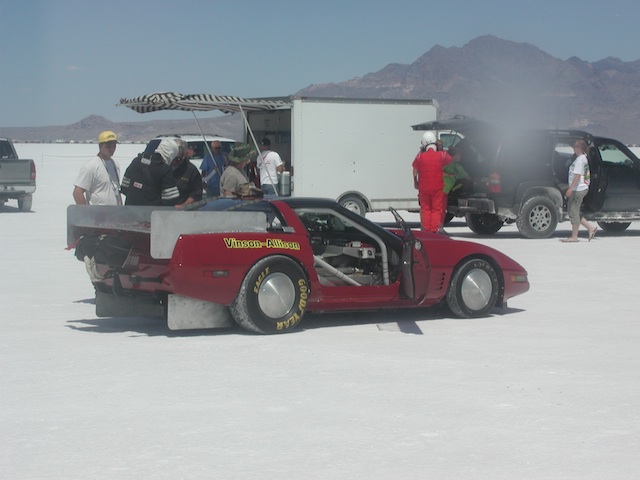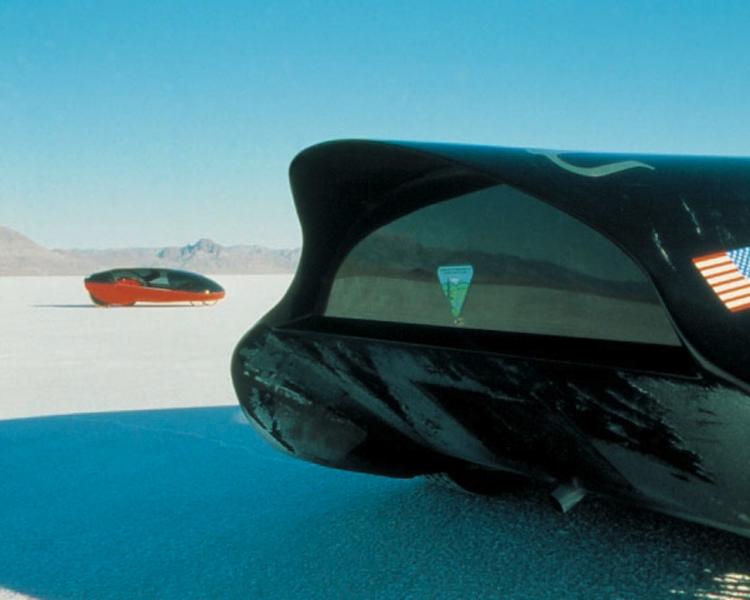 05-04-2020, 03:39 AM
05-04-2020, 03:39 AM
|
#31 (permalink)
|
|
Banned
Join Date: Nov 2017
Location: Australia
Posts: 2,060
Thanks: 107
Thanked 1,608 Times in 1,137 Posts
|
Quote:
Originally Posted by 2000mc

Have you tried testing with a scangauge or other similar device? Measuring to .1mpg should give you around 7x the resolution for an insight vs kmph.
When i tried testing wheel covers my results kept trending upwards, which I think would have been lost along with any result, if not for greater resolution. https://ecomodder.com/forum/showthre...tml#post418212
Do you have thoughts as to why in this more recent test, windows down produced 101kmph from a baseline of 103.5, while in an earlier video showed 98 from a baseline of 104? |
I have a full MoTeC data logging system. I can measure mileage to basically whatever resolution I want at whatever frequency I want. But I don't think short-term mileage testing tells you anything much.
I think the problem with both short term mileage and coast downs is that the test occurs over a period. Any change at any point within that test period will give you an error. A change in yaw angle, a gust of wind, etc. With throttle stop testing, you just get to that speed and then it holds. It's a settled, single number recorded at that point.
Yes, I have a very good idea at the reason for the change in maximum speed with the windows down this time. It was dead calm. The other test, it was blowing a gusting crosswind.
Finally, I think that chasing maximum resolution is the wrong fundamental approach. I don't think any on-road testing (including acceleration, etc) has the repeatability to require high resolution. In those circumstances, high resolution gives you a false sense of data accuracy. If I can't see a change of well over 1 per cent (and usually higher), for me the aero modification is not worth pursuing.
(The parallel is performance testing. A few decades ago I used to run dozens and dozens of stopwatched 0-100 km/h road times on my cars, doing runs after every modification. Say the car was typically doing 0-100 in 6.4 seconds. I'd want to see 6.2 seconds as the average of the runs before I figured I'd made any improvement. That's 3 per cent.)
Last edited by JulianEdgar; 05-04-2020 at 06:00 AM..
|
|
|

|
 Today Today
|
|
|
|
 Other popular topics in this forum...
Other popular topics in this forum...
|
|
|
|
 05-04-2020, 04:41 AM
05-04-2020, 04:41 AM
|
#32 (permalink)
|
|
Banned
Join Date: Nov 2017
Location: Australia
Posts: 2,060
Thanks: 107
Thanked 1,608 Times in 1,137 Posts
|
Video on today's testing. I was blown away by the results of the aerofoil air curtains - the aerofoil Edgarwits.
|
|
|

|
 05-04-2020, 08:37 AM
05-04-2020, 08:37 AM
|
#33 (permalink)
|
|
Master EcoModder
Join Date: Dec 2016
Location: Florida
Posts: 496
Thanks: 86
Thanked 228 Times in 190 Posts
|
Quote:
Originally Posted by JulianEdgar

You may well be right - and of course you can do some testing and make your own measurements. I don't have a monopoly on testing and posting results!
|
I was hoping you could at least share what the measurement was of the spacing of the strakes used in your test, to see how close it approaches the "norm" I mentioned, whether my assumption was indeed accurate of the purpose of the "PW" squares, and how thick the PW was, and maybe whether there was any real attempt to "chamfer"(?) any of the airflow exposed edges of the PW. |
|
|

|
 05-04-2020, 08:42 AM
05-04-2020, 08:42 AM
|
#34 (permalink)
|
|
Master EcoModder
Join Date: Dec 2016
Location: Florida
Posts: 496
Thanks: 86
Thanked 228 Times in 190 Posts
|
Quote:
Originally Posted by freebeard

The alternative to straight strakes is to have them splayed.

It may not show at this angle (never saw the car again) but the fences inside the wheels are angled outward the width of the tires. This example is sized to the max of the class racing rules. I can see it doing triple duty: separate wheelwell and underbody flow
diverging duct for the underbody
open-sided wheel spat |
My suspicion on the vette on the flats, there is a lot of effort there to gain rear DF with the least amount of drag within the rules, being getting HP to the salt is difficult at high speeds with OEM body shape. My guess, drag reduction was the lesser goal.
|
|
|

|
|
The Following 2 Users Say Thank You to j-c-c For This Useful Post:
|
|
 05-04-2020, 12:04 PM
05-04-2020, 12:04 PM
|
#35 (permalink)
|
|
Banned
Join Date: Nov 2017
Location: Australia
Posts: 2,060
Thanks: 107
Thanked 1,608 Times in 1,137 Posts
|
Quote:
Originally Posted by j-c-c

I was hoping you could at least share what the measurement was of the spacing of the strakes used in your test, to see how close it approaches the "norm" I mentioned, whether my assumption was indeed accurate of the purpose of the "PW" squares, and how thick the PW was, and maybe whether there was any real attempt to "chamfer"(?) any of the airflow exposed edges of the PW.
|
I don’t think there is a norm for diffuser strake separation. I’ve seen it vary very widely.
What does PW mean?
Given the likely thickness of the boundary layer at the rear of the car, I wouldn’t expect minor discontinuities to have any impact. |
|
|

|
 05-04-2020, 01:59 PM
05-04-2020, 01:59 PM
|
#36 (permalink)
|
|
Master EcoModder
Join Date: Aug 2012
Location: northwest of normal
Posts: 29,412
Thanks: 8,365
Thanked 9,125 Times in 7,534 Posts
|
I thought it was 'plywood'. I may be wrong.
I watched today's video. I see that you varied the exit gap 20-40mm. I'm curious about the ratio between inlet and exit. At the low end, I'd expect no differing result. At the high end (wide ratio) I'd expect the duct to choke off and be ineffectual.
Will you look at the ratio and magnitude. The OEM air curtains always look small to me.
Have you looked a the work Viktor Schauberger did with trout propelling themselves with water through their gills? duckduckgo.com/?q=shauberger+trout+gills
__________________
.
.Without freedom of speech we wouldn't know who all the idiots are. -- anonymous poster
___________________
.
.tragectory: Line goes down and to the right.
|
|
|

|
 05-04-2020, 02:12 PM
05-04-2020, 02:12 PM
|
#37 (permalink)
|
|
Master EcoModder
Join Date: Dec 2016
Location: Florida
Posts: 496
Thanks: 86
Thanked 228 Times in 190 Posts
|
Quote:
Originally Posted by JulianEdgar

I donít think there is a norm for diffuser strake separation. Iíve seen it vary very widely.
What does PW mean?
Given the likely thickness of the boundary layer at the rear of the car, I wouldnít expect minor discontinuities to have any impact.
|
Yes PW =plywood, is that what is in your test?
"Norm" being more those that are by professionals for wind tested applications vs those like some of us shade tree aero wannebe's. And even with a wide diversity in designs, from experiences, they usually fall into a 6-8" strake separation, yours looked wider, and hence my comment, and I am still in the dark as to what the separation was in your test.
If that boundary layer is that deep at that location, I suspect it's not a prime candidate for smaller strakes to begin with.
"Minor" is rather subjective, and it would have been straight forward to determine, if a test had been made without strakes and PW only, to better support your stated conclusion. |
|
|

|
 05-04-2020, 02:43 PM
05-04-2020, 02:43 PM
|
#38 (permalink)
|
|
Master EcoModder
Join Date: Aug 2012
Location: northwest of normal
Posts: 29,412
Thanks: 8,365
Thanked 9,125 Times in 7,534 Posts
|
Quote:
|
"Norm" being more those that are by professionals for wind tested applications vs those like some of us shade tree aero wannebe's.
|
I would think the 'norm' would fall between these extremes:

Luigi Colani was an aerodynamic stunt driver. He used skegs and a steep angle. This Lotus is more shade tee, but it looks right-sized to me:

IMHO it gives up a lot with the rear tire's wake.
__________________
.
.Without freedom of speech we wouldn't know who all the idiots are. -- anonymous poster
___________________
.
.tragectory: Line goes down and to the right.
|
|
|

|
 05-04-2020, 05:17 PM
05-04-2020, 05:17 PM
|
#39 (permalink)
|
|
Banned
Join Date: Nov 2017
Location: Australia
Posts: 2,060
Thanks: 107
Thanked 1,608 Times in 1,137 Posts
|
Quote:
Originally Posted by j-c-c

Yes PW =plywood, is that what is in your test?
"Norm" being more those that are by professionals for wind tested applications vs those like some of us shade tree aero wannebe's. And even with a wide diversity in designs, from experiences, they usually fall into a 6-8" strake separation, yours looked wider, and hence my comment, and I am still in the dark as to what the separation was in your test.
If that boundary layer is that deep at that location, I suspect it's not a prime candidate for smaller strakes to begin with.
"Minor" is rather subjective, and it would have been straight forward to determine, if a test had been made without strakes and PW only, to better support your stated conclusion.
|
The strakes I trialed are 410mm apart. I've seen production cars with strakes as far apart as the full diffuser width, all the way to being only about 75mm apart. In my book, page 95 and pages 183 - 185 have some good views of strakes in diffusers of production cars.
The plywood (both strakes and base) is 3mm thick. I didn't bother describing the assembly because it's shown in the third post in this thread - https://ecomodder.com/forum/showthre...tml#post622797
When it was in position, it was taped around all edges. The sheet was sized to be the same as the rear diffuser, which in this part is flat (ie not curved). I would guess the boundary layer as being something like 10mm thick at this point, so I can't see small discontinuities making much difference to anything. At their maximum, the strakes are 90mm deep. |
|
|

|
 05-04-2020, 06:28 PM
05-04-2020, 06:28 PM
|
#40 (permalink)
|
|
Banned
Join Date: Nov 2017
Location: Australia
Posts: 2,060
Thanks: 107
Thanked 1,608 Times in 1,137 Posts
|
Quote:
Originally Posted by freebeard

I watched today's video. I see that you varied the exit gap 20-40mm. I'm curious about the ratio between inlet and exit. At the low end, I'd expect no differing result. At the high end (wide ratio) I'd expect the duct to choke off and be ineffectual.
Will you look at the ratio and magnitude. The OEM air curtains always look small to me.
[/URL]
|
I am making some proper ones (ie ABS plates top and bottom, and permanently attached to the car) and want to do some further testing of the ratios of inlet/outlet areas, plus testing also on windy days. Probably will be a week or so.
|
|
|

|
|
The Following User Says Thank You to JulianEdgar For This Useful Post:
|
|
|